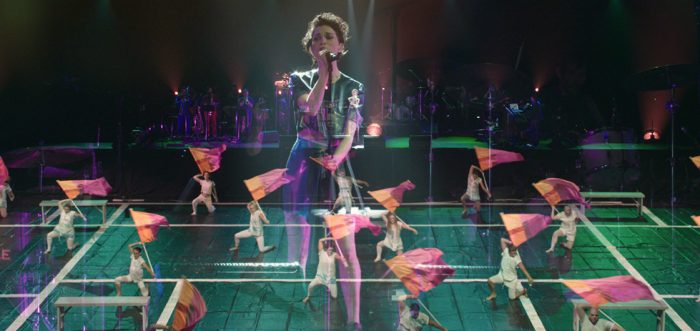
I’ve been following filmmaking brothers Bill and Turner Ross in my mind since I reviewed their debut documentary feature, 45365, when it had a short season at Australian Centre for the Moving Image in 2010. As far as I had noticed, nothing of theirs had screened in Melbourne since, and I had never had the chance to see their follow up work. I didn’t even know that they were making more films, although I often thought back to the gentle images of Sidney, Ohio, the drifting pulse of small-town America, to the closing sequence of a darkened road accompanied by The Flamingos’ gentle pop tune “I Only Have Eyes For You”.1
With their new film Contemporary Color, they treat everything with the same loving attentiveness and dimestore simplicity given to their hometown of Sidney in 45365. Along with Tchoupitoulas (2012) and Western (2015), this film exists in “a sort of regional Americana trilogy,” as they have said elsewhere. In Contemporary Color, Bill and Turner Ross bring regional America to Manhattan in the form of colour guard, a dance style in which squads of high schoolers perform synchronized routines. The film tracks an experimental performance (of sorts) that came together when David Byrne selected ten of the top colour guard teams from the USA and Canada and matched them with specially chosen musicians, who each wrote original music for their specific teams. While the challenge of colour guard typically lies only in matching choreographed moves with recorded music, this event enriched the performances with the element of live collaboration amongst the artists. In turn, Bill and Turner Ross recruited cinematographer Jarred Alterman—along with a slew of additional operators including Sean Price Williams, Robert Greene, and Jessica Oreck—to document the performance at New York’s Barclay Centre. The result is, as one would expect, kaleidoscopic.
Bill and Turner Ross are not concerned with painting a big picture, but simply follow their intuition, follow their eye. This is not necessarily a formally admirable quality, but it takes thought, and a certain knack for art that the Ross brothers possess, an ability to be intimate while remaining at a distance. Contemporary Color is composed of performance, segments of rehearsal, and backstage interviews, and is very aware of itself as a documentary, including other cameras and photographers from early on. Yet the Ross brothers are not simply documentarians — they are also great filmmakers.
The film seamlessly transitions between footage of the live show and the teams in rehearsals, which creates a fluidity of time and rhythm, and allows them to observe everyday America, on local streets and in school halls, as well as in this performance space. They use slow motion during some performances, to emphasise the entrancing music and the truly hypnotic nature of bodies in synchronised performance, their editing style illuminating the aural beats. Splicing close-ups into wide shots of the stage, this is a focus on the art of dance, of movement, offered by something recent like Anna Rose Holmer’s The Fits with its appreciation of the art of drill in Cincinnati. Shots of musicians and performers are sometimes presented in double exposure, always emphasising the essence of the body in the physical performance of dance and music.2
The wonderful cast of musicians includes Nelly Furtado, Lucius, Devonté Hynes, and Byrne himself. Yet a major drawback is the singing voices of some performers, who for whatever reason — lack of classical training, flawed acoustics, performance fatigue, absence of a recording studio’s tricks — struggled with tone and note accuracy at times. Some entire performances were tainted by this but other voices were beautiful and unique, and the warm rapport between the musicians and their colour guard teams, seen both in performance and behind the scenes, adds some personal elements to the observational documentary. As noted by Byrne, he intended for the performance to encourage camaraderie rather than competitiveness, and the filmmakers enhance this spirit.
The final moments celebrate the performance event with an explosion of rainbow streamers, injecting a disorganised splendour to the strict militaristic discipline and control. In a way, this ending mirrors the opening shot, which captured the rainbow of lights in Manhattan with a template of carnivalesque music. So while the colour guard dance form depends on strict routine, the film itself celebrates the serendipitous colour in the American landscape. Contemporary Color is not a consistently great film, but Bill and Turner Ross always respond to the musical form and cinematic beat, and are intuitively attuned to its creative power. This is one to see in the cinema, for while they the Ross brothers do appreciate small moments, a big screen is the only platform that might replicate the grand live spectacle of the art form they capture here.
